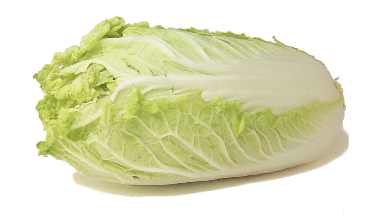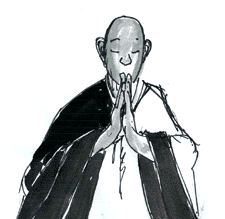

eMirror Vol 27, No. 9
Friday, March 3rd, 2023
Edited by the Practice Council
The White Wind Zen Community:
An international community practising and teaching Dogen’s Zen since 1985.
Usually the worms tend to want to buff up the skin, paint particular markings on it, rub lipstick on its upper opening and things like that as they heave themselves back and forth in search for food. But even the search for food has been a little abstracted. Instead of actually working for its food, it works for little credit chips that it gives to other worms to get the food that those worms have grown. And it certainly doesn’t want to know about how the food gets spat out the other opening.
But there is nothing wrong with worms and nothing wrong with skin and nothing wrong with eating and shitting. And so the Buddha says, "Listen, what is the space element internally? Whatever is internal to the individual and is spacious, has become spacious, or is derived from space. Such as the opening of the ears, the nose, the mouth, the space in which we swallow the food we have eaten, the space in which the food is held, and the space it passes through to be excreted through the lower part of the body, and anything else which is internal to an individual, which is spacious is the internal space element."
Worms are full of holes. And a worm lives in a kind of hole, a big worm hole. We call it the sky. There is space between each of the bodies sitting here, and there is space inside each of the bodies. The bodies sit on the earth, and the bodies are earth. They drink water, but the body is 98% water. It likes to feel nice and warm and toasty, and in itself is 98.5 degrees Fahrenheit. It breathes in and it breathes out, and is always moving, just like air, always vibrating, heart is beating, the neurons are firing. It is a busy little worm.
The Buddha really wants us to appreciate all of this. And so he says, “Practise like the earth. If you become like the earth, then the sensations which arise, whether pleasant or unpleasant, will not take hold of the mind, nor do they establish themselves.” Because the earth is free of praise and blame, it is just earth. You can spit on it, you can kick it, call it all kinds of names, earth is just earth.
-Ven Anzan Hoshin roshi, continuing Teisho Three: "The Worm" in the series "Flowers and Worms", Hanamatsuri sesshin, April 11th to 14th, 1991, Zazen-ji.
Fusatsu: March 8th and 22nd.
Introduction to Zen Workshop Ottawa
The next Introduction to Zen Workshop will take place on Saturday, March 4th, at 1:45 p.m. To register: https://IntroductionToZenWorkshop.eventbrite.ca; for more information please see https://wwzc.org/introduction-zen-workshop-ottawa
March Two-day Sesshin:
The March two-day sesshin will begin at 8:00 p.m. on Friday, March 10th and will end at 6:00 p.m. on Sunday, March 12th.
Keizan-ki
March 21st is the memorial for Keizan Jokin zenji.
Hermitage:
The Roshi is continuing an extended period of "self-isolation" due to underlying health issues until the COVID-19 situation clarifies.
Long Distance Training Program:
For students living an hour or more commuting distance from the monastery in Ottawa, please visit this Web Page: https://wwzc.org/long-distance-training-program
“River of Memory”: transcript of teisho presented by Ven. Anzan Hoshin roshi at Zazen-ji, on March 21st, 1991:
https://wwzc.org/dharma-text/river-memory
Leonardo Nobrega sat a two-day retreat from Friday, February 24th to Sunday, February 26th. Challian Christ sat a one-day retreat on Monday, February 27th at Dainen-ji. Charlane Bishop sat a half-day retreat on Tuesday, February 28th at her home in Newtonville, Nova Scotia.
If you are a student of Ven. Anzan Hoshin roshi and would like to sit a retreat at Dainen-ji,, please email schedule@wwzc.org to register a week in advance. For further information please visit this page: https://wwzc.org/retreats
If you would like to sit a retreat at home please follow the schedule outlined in this page:
https://wwzc.org/retreat-schedule-public-students. After your retreat, please send an email to schedule@wwzc.org to confirm that you sat a retreat and include the duration and location.
Saturday, March 4th to Saturday, March 11th
Saturday, March 4th general sitting: "The Landscape of Reality" by Ven. Anzan Hoshin roshi: "The Last Piece" (12 of 12, 35 minutes)
Monday, March 6th associate sitting: "The Touchstone" by Ven. Jinmyo Renge sensei: "The Touchstone 17, Samantabhadra" (teisho 17 of 22, 18 minutes)
Thursday, March 9th associate sitting: "The Touchstone" by Ven. Jinmyo Renge sensei: "The Touchstone 17, Samantabhadra" (teisho 17 of 22, 18 minutes)
Saturday, March 11th combined sitting: “The Touchstone" by Ven. Jinmyo Renge sensei: "The Touchstone 18, Vastness" (teisho 18 of 22, 15 minutes)
Associate and general students should continue to follow the recorded Teachings schedule for the sitting you were attending at the monastery, and listen to that during your home practice.
You can access the online Recorded Teachings Library at wwzc.org/recorded-teachings-schedule.
You can also use the streaming site at app.wwzc.org to live stream recordings from the online Library. If you have forgotten your password or need assistance with accessing the recorded Teachings, please email schedule@wwzc.org.
Please note that teisho should be listened to in the correct order and with none missed out as themes, metaphors, questions raised and answered evolve in spirals throughout the series.
While most of the online Recorded Teachings library is password-protected and only accessible to students of the Lineage of Zen Master Anzan Hoshin, a small selection of MP3 recordings of teisho are accessible to the public at wwzc.org/recorded-teachings Additional recordings will be uploaded periodically. MP3 recordings of four recorded teisho by Ven. Anzan Hoshin roshi are currently available:
Dharma Position https://wwzc.org/dharma-position
Eyes See, Ears Hear https://wwzc.org/eyes-see-ears-hear
Embarrassment https://wwzc.org/embarrassment
Ven. Anzan Hoshin roshi's reading of his translation of Eihei Dogen zenji's “Bendowa: A Talk on Exerting the Way”: https://wwzc.org/bendowa-talk-exerting-way

Photograph of Ven. Anzan Hoshin roshi at Daijozan, mid-1980s,
by Ven. Shikai Zuiko sensei
Ven. Anzan Hoshin roshi has recently completed translation work on some shorter texts by Eihei Dogen zenji from the Shobogenzo. The work on these particular texts is based upon the literal translations that he worked on with Joshu Dainen roshi at Hakukaze-ji around 1977-78 followed by many years of putting them down, picking them up, and polishing. Naturally, more essential texts such as Uji, Genjokoan, Shinjin Gakudo and some 40 others were completed first and have been given extensive commentaries by the Roshi. This batch of texts includes Baike: Plum Blossoms, Ryugin: Howling Dragon, and Udonge: The Udumbara Blossoming and many others are nearing completion. Annotation details and successfully conveying them across various document formats are the issue at this point.
Work on Bussho: Buddha Nature, a very long and nuanced text by Dogen zenji, is ongoing.
Roshi is also finishing an update to the Saijo Shingi: The Deportment of Radiance, our manual of monastic training standards which is a supplement to the ancient Eihei Shingi and Keizan Shingi.
Begun by Ven. Shikai Zuiko o-sensei
Finished by Ven. Fushin Comeau shuso following her death

Udumbara (S): a mythological flower which is said to bloom only once in three thousand years, signalling the arrival of a Buddha or world Teacher
Posted February 24th, 2023. New entries are posted every two weeks.

Dogen zenji taught in the Tenzo Kyokun: Instructions for the Tenzo (https://wwzc.org/dharma-text/tenzo-kyokun-instructions-tenzo) that the work of preparing and serving meals is "a matter for realized monks who have the mind of the Way “, or by senior disciples who have roused the Way-seeking mind." In alignment with this, part of Zen Master Anzan Hoshin's samu for the Community involves personally overseeing the activities of the ancient Office of Tenzo. Ven. Jinmyo Renge sensei serves as Tenzo and Mishin godo and Saigyo ino offer assistance as tenzo-anja. The following meals were prepared on Monday, Tuesday and Thursday evenings.
Monday Yakuseki:
White and brown basmati rice; vegetable curry with tofu (masala made from chopped onions, tomatoes, garam masala, turmeric, kashmiri chilli powder, cumin, coriander, coconut milk, chopped onion, poblano peppers, red bell peppers, zucchini, cubed semi-firm tofu; Napa cabbage salad (Napa cabbage, slivered carrots, thinly sliced white onion; dressing made from equal parts apple cider vinegar, Dijon mustard, mayonnaise, with popped mustard seeds and toasted cumin seeds.)
Tuesday Yakuseki:
Warm crusty rolls with butter; salad of romaine, green and red leaf lettuce, thinly sliced red onions, and chopped tomatoes with a dressing of mayonnaise, dijon mustard, apple cider vinegar, black pepper, and honey.
Vegetarian option: white bean stew (chopped onions, celery, carrots, minced garlic, cubed potato, corn and peas, white kidney beans, vegetable stock, thyme, basil, parsley, red chili flakes.
For those who wished to supplement their diet with meat - cooked chopped chicken breast added to the white bean stew.
Thursday Yakuseki:
White and brown basmati rice; chickpea fritters (finely chopped chickpeas, scallions, coriander, all-purpose flour, egg, garam masala, cumin, coriander, turmeric, chilli powder formed into small patties and deep fried); vegetable pakora (gram flour, thinly sliced onion, potatoes and cauliflower, garam masala, turmeric, chilies, ginger, chopped coriander, fenugreek leaves, cumin, kashmiri chilli powder); dipping sauce: imlee (tamarind paste, salt, fresh coriander, garam masala, lemon juice, chilies, carrot and onion finely chopped); mixed vegetables (dai gai choy, gail lan, bok choy, sliced white onion sauteed and seasoned with a sauce made from tomato paste, minced garlic and onion, popped mustard seeds and cumin seeds.

If you would like to thank someone for a contribution they have made, please feel free to send an email to Jinmyo sensei at rengezo@gmail dot com, but be sure to type "eMirror” in the subject line.
From Saigyo ino:
Thank you to the Roshi for creating the graphics we use through all of the archiving processes and for terrific reading recommendations. Thank you to Jinmyo sensei for reorganising the cleaning supplies so that accessing them is now much simpler and amongst so much good food she prepares each week, amazing pakoras at Thursday's supper. Thank you to Mishin godo for keeping the roof garden free of snow so that Kuro (the third floor cat) can get some outside time and for soft boiled eggs made regularly for 3rd floor residents. Thank you to Fushin shuso for work on a new attendance app for the sittings and for snow blower skills during the recent heavy snows. Thank you to Leonardo Nobrega for assisting with morning samu and soji each day and to David Gallant for selling some unwanted items to help fund the various samu projects currently underway. Thank you to Shannon Morphew and Greg Parker for samu to continue with restoring the windows from the unfinished guest room on the first floor and to Ian Richard for continued work on finishing the hard copy archives of the eMirror.
From Fushin shuso:
Thank you to Ven. Anzan Hoshin roshi for the February Nehan O-Sesshin and for giving the name “Kuro” to a monastery cat in my care. Thank you Ven. Jinmyo Renge sensei for leading each sitting throughout the Nehan O-Sesshin.
From David Gallant:
Thank you to Roshi for making this immeasurably rich practice available to students around the world. Thank you to Jinmyo sensei for many years of regular daisan, and now dokusan, and for much instruction about staying grounded in reality.
From Challian Christ:
Thank you Mishin godo for reviewing the forms with me and making a delightful breakfast during my retreat. Thank you Saigyo ino for direction throughout the day, and for your helpful insights during my most recent practice interview. Jinmyo sensei, I have never eaten as well as I do at Dainen-ji—thank you for the delicious and nourishing meals. Thank you Anzan Hoshin roshi for opening the monastery to students like myself. It is a privilege to practise in such a space.
|